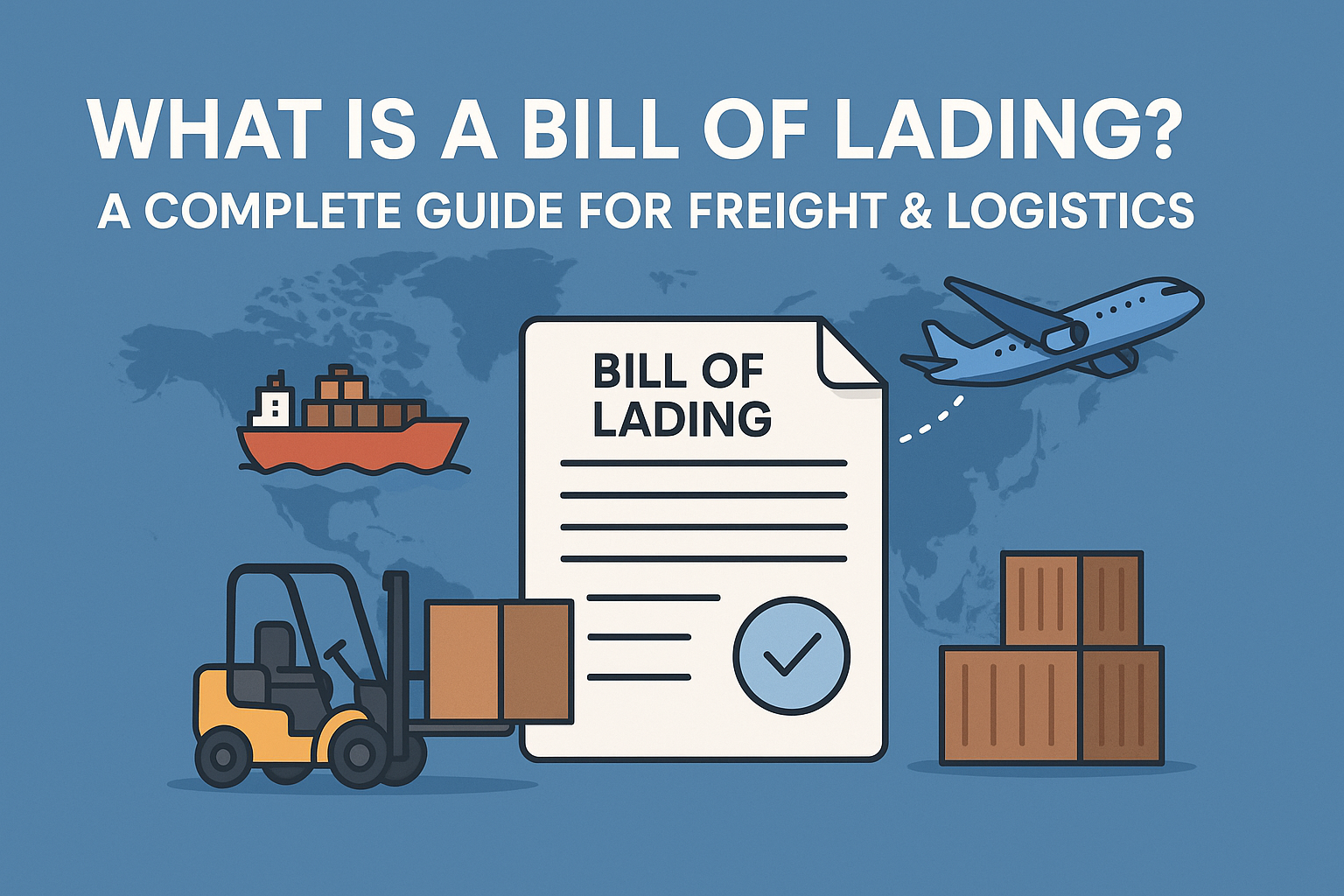A Bill of Lading (B/L) is one of the most important documents in international trade and logistics. It serves as a receipt issued by a carrier to a shipper, a contract of carriage, and a document of title for the goods being shipped.
Whether you are a freight forwarder, customs broker, or a logistics professional, understanding the Bill of Lading is essential for smooth shipping operations. In this detailed guide, we will explain its types, functions, components, and how it works step-by-step.
Why is a Bill of Lading Important?
A Bill of Lading is more than just paperwork. It plays several key roles:
- Proof of Shipment: Confirms that goods have been shipped by the carrier.
- Legal Contract: Establishes the contractual terms between the shipper and the carrier.
- Document of Title: Allows the holder to claim the goods at the destination port.
- Customs Compliance: Used by customs authorities to verify cargo details.
- Facilitates Payment: Banks and financial institutions may require a B/L for letters of credit and payment release.
Without a Bill of Lading, shipments may face delays, legal complications, and financial disputes.
Types of Bill of Lading
Understanding the types of B/L is crucial because each serves a different purpose:
- Straight Bill of Lading
- Non-negotiable
- Goods delivered only to the specified consignee
- Cannot be transferred to another party
- Order Bill of Lading
- Negotiable and transferable
- Can be endorsed to another party
- Commonly used in international trade
- Seaway Bill
- Non-negotiable
- No physical document required to claim goods
- Speeds up delivery
- Received for Shipment Bill of Lading
- Confirms carrier has received the goods but not yet shipped
- Used for logistics tracking and pre-shipment documentation
Key Components of a Bill of Lading
A standard Bill of Lading includes the following essential information:
- Shipper Details: Name, address, and contact information
- Consignee Details: Name and delivery address
- Carrier Details: Name of the shipping line or freight forwarder
- Description of Goods: Quantity, weight, type of packaging, and special handling instructions
- Port of Loading & Discharge: Where goods are shipped from and delivered
- Terms and Conditions: Carrier liability, insurance, and responsibilities
- Signatures: Shipper and carrier signatures to validate the document
These components ensure legal compliance and prevent disputes.
How a Bill of Lading Works – Step-by-Step
Step 1: Preparing the Shipment
The shipper prepares the cargo and ensures all documentation is ready for shipment.
Step 2: Delivery to Carrier
Goods are handed over to the carrier for transport. Carrier inspects the goods for quantity and condition.
Step 3: Issuance of Bill of Lading
The carrier issues the B/L to the shipper, confirming receipt and detailing shipment terms.
Step 4: Shipment and Transport
Goods are transported to the destination port. The B/L acts as proof of legal ownership.
Step 5: Claiming the Goods
At the destination, the consignee presents the Bill of Lading to claim the shipment.
Step 6: Customs Clearance
Customs authorities use the Bill of Lading to verify shipment details for import/export compliance.
Common Mistakes to Avoid with Bill of Lading
- Incorrect consignee information
- Missing signatures or incomplete fields
- Using the wrong type of Bill of Lading
- Failing to include insurance or special handling instructions
- Not keeping copies for records
FAQ Section
FAQ 1: What is the difference between Bill of Lading and Invoice?
Answer: A Bill of Lading proves shipment and acts as a title document, while an invoice is a request for payment for the goods.
FAQ 2: Can a Bill of Lading be transferred?
Answer: Yes, an Order Bill of Lading is negotiable and can be endorsed to another party.
FAQ 3: Who issues a Bill of Lading?
Answer: The carrier, such as a shipping line or freight forwarder, issues the Bill of Lading to the shipper.
FAQ 4: Is Bill of Lading mandatory for all shipments?
Answer: Yes, for international shipments, a Bill of Lading is essential for customs and ownership purposes.
Conclusion
A Bill of Lading is a cornerstone of freight and logistics operations. From proving shipment to enabling customs clearance and facilitating legal ownership, understanding this document is crucial for shippers, consignees, and logistics professionals alike.
By following the steps, understanding types, and avoiding common mistakes, businesses can ensure smoother shipping, minimize delays, and maintain compliance with international trade regulations.
